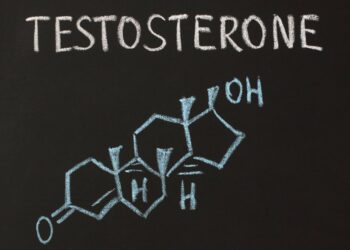TOPLINE:
Testosterone treatment appears to be cost-effective in middle-aged men when health utility benefits are considered. It may also be cost-effective in older men with nonsyndromic low testosterone, but this depends on cardiovascular safety.
METHODOLOGY:
- A cost–utility analysis comparing testosterone treatment with no treatment over a 10-year period, using data from placebo-controlled, double-blind, randomised clinical trials.
- Cost utility (quality-adjusted life years [QALYs]) accrued and costs of testosterone treatment, monitoring, and cardiovascular complications were compared to estimate the incremental cost-effectiveness ratios (ICERs) and cost-effectiveness acceptability curves for selected scenarios.
- Three starting age groups were defined: the 40-, 60-, and 75-year-old groups.
TAKEAWAY:
- As expected, costs were higher for testosterone treatment vs no treatment, reflecting the costs of the therapy and associated follow-up.
- Costs also increased with age due to a higher chance of complications, whereas QALYs decreased in older men.
- With EuroQol-5D scores mapped using Beck Depression Inventory (BDI) multipliers and relative risks (RRs) of 0.47 and 1.06 for mortality and cardiovascular complication, respectively, all ICERs were below the UK cost-effectiveness threshold of £20,000.
- The ICERs remained within the UK cost-effectiveness threshold of £20,000 per QALY gained in the 40- and 60-year-old groups with a low RR for all-cause mortality, but increased beyond the £20,000 threshold in the 75-year-old group with an RR of > 1 for all-cause mortality.
- Cost-effectiveness acceptability curves confirmed that the probability of the testosterone treatment being cost-effective depends on the RRs for all-cause mortality and complications, to a greater degree in the 60- and 75-year-old groups with a higher baseline risk.
- For example, the probability of testosterone being cost-effective at a £20,000 cost-effectiveness threshold and an RR for mortality of 1.25 and RR for complications of 1.38 falls by 76% to 25% and 0% for the 40-, 60- and 75-year-old starting age cohorts, respectively.
IN PRACTICE:
“We have conducted the first cost evaluation for testosterone treatment in middle-aged and older men … When the BDI-based utility scores were used, our results suggest testosterone was cost-effective irrespective of the morbidity and mortality sensitivity analyses in men below 75 years,” the authors wrote. “Our analysis underlines that all-cause mortality is a strong driver for the value of testosterone, particularly for older men,” they added.
SOURCE:
The study was led by Rodolfo Hernández, Health Economics Research Unit, University of Aberdeen, Foresterhill, Aberdeen, UK, and colleagues, and was published online on January 17, 2024, in the Andrology.
LIMITATIONS:
The limitations were treatment discontinuation was not assumed. Mapping approach (ie, mapping within the psychotherapeutic outpatient setting) may not be generalisable to our population. Model predictive performance was better for individuals in good vs bad health. RRs for mortality and complications were based on small event numbers. Cost-effectiveness of testosterone was not compared with lifestyle modifications. Real-world cost-effectiveness may differ from clinical trials.
DISCLOSURES:
The study received funding from the National Institute for Health and Care Health Technology Assessment Programme and Medical Research Council. Except one, all authors reported no conflict of interests.
Source link : https://www.medscape.com/s/viewarticle/testosterone-therapy-cost-effective-most-men-low-t-2024a100020p?src=rss
Author :
Publish date : 2024-01-30 17:00:00
Copyright for syndicated content belongs to the linked Source.


